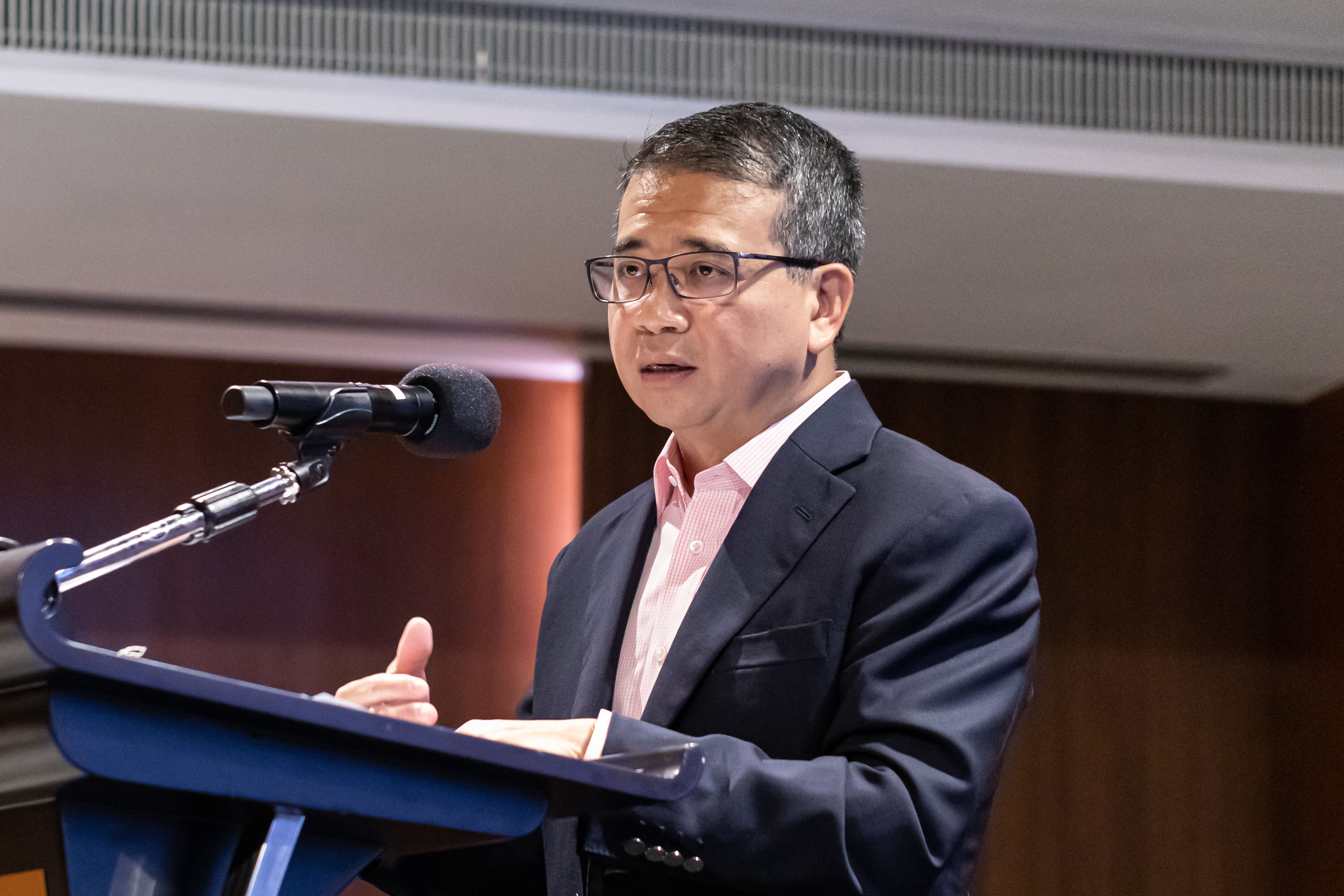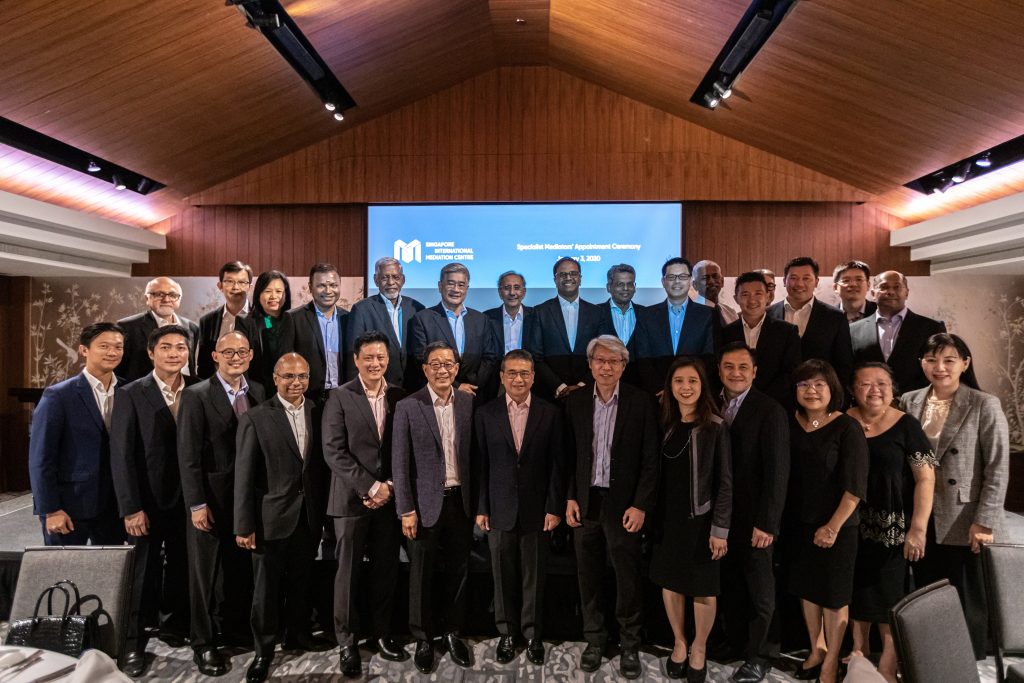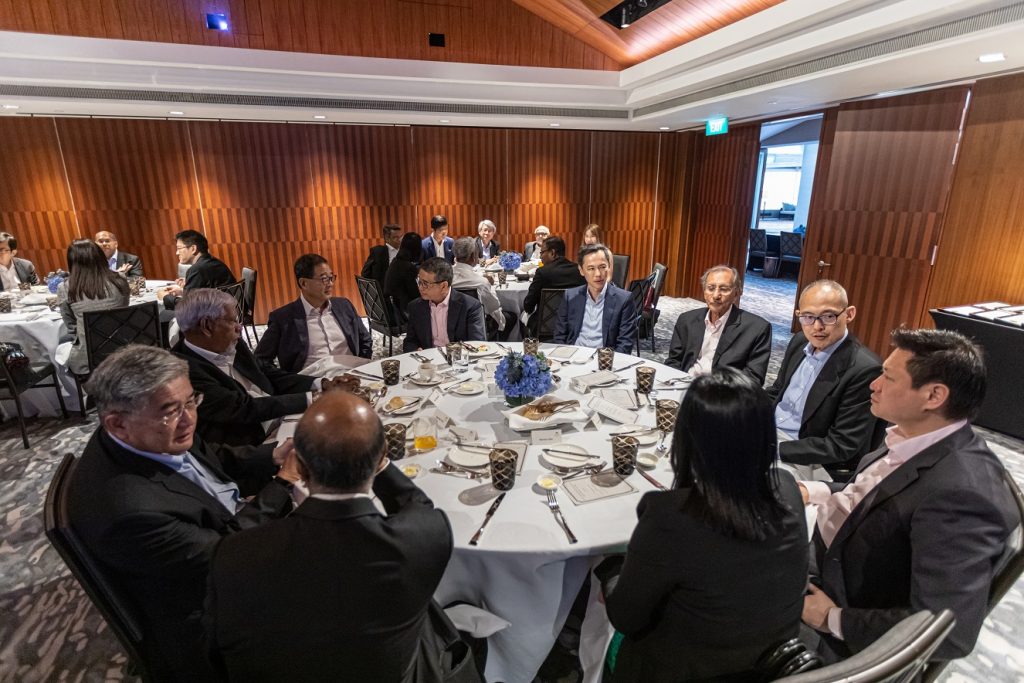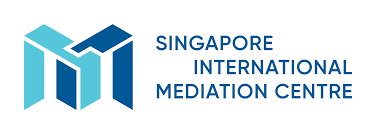Speech by Mr Edwin Tong, Senior Minister of State for Law and Health, at the SIMC Singapore Specialist Mediators Appointment Ceremony
Extracted from the Ministry of Law, 3 January 2020
SIMC Chairman, Deputy Chairman and Board members
Friends and colleagues
Introduction
1. Happy New Year.
2. I am happy to be here today. This is the second specialist mediators appointment ceremony which I have attended. The first one was in Delhi, where we appointed Indian specialist mediators, including ex-judges, lawyers, and in-house counsel – a fairly good mix. Today, these people are our ambassadors. When they go around internationally to attend conferences, see their clients and fellow practitioners, and meet others from the international bar, they spread the word about mediation. This enhances our standing, not just in Singapore, but internationally as well. This will be useful, but of course, this second ceremony has special meaning, because we are doing it in Singapore, for our Singapore practitioners and in-house counsel.

Mr Edwin Tong SC, Senior Minister of State for Law and Health
Developing Singapore as an International Dispute Resolution Hub
3. Our efforts to develop international commercial mediation in Singapore is really ultimately aimed at benefitting Singapore and Singaporeans. What we want to do here today is to build up mediation, as part of our suite of dispute resolution options – three powerful and complementary options that we can sell to users in Singapore and outside of Singapore.
4. What do we want to do? First, we want fundamentally to make our laws and rules related to dispute resolution pro-business – this is the objective of policies we have enacted. Legal services are services in nature, and they can only work if they are pro-business – usable by business people, and commercial in nature. We also move quickly, changing it and fine-tuning it, if necessary. Businesses ultimately want to know that if they invest in Singapore, their investments will be safe, and should there be a dispute, they want to know that it will be resolved impartially in a transparent manner, quickly, expeditiously, and cost effectively. Mediation offers all of this.
5. Second, we want what we do today with the specialist mediators appointment, and with the broader framework that we will be introducing, to grow mediation out there in the world which ultimately will have a link to Singapore. As each of you carry the Singapore flag overseas, plant that flag so that disputes can be brought into Singapore, and SIMC and local mediators can become mediators in those cases.
6. Third, we want our lawyers and in-house counsel to use the base we have established to broaden the Singapore influence over mediation in Asia, as well as the world. We can set that as a realistic target. All of you here, together with the institutions, represent the forefront of thought leadership in mediation in Singapore. The stronger we are as a community and the more advanced we are in terms of taking thought leadership roles around the world, the more we will develop mediation and the more the world will look at Singapore’s leadership – not just because of the signing of the Singapore Convention on Mediation, but using the Convention as a platform for achieving all of this.
Growth of International Mediation
7. We have been encouraged by the steady progress of mediation over the years. International commercial mediation is still less prevalent than domestic community mediation. All of you may remember the days when we first started mediation in Singapore some 20 to 25 years ago. I was a young lawyer at that point in time. When we were in court arguing a case in chambers with the Deputy Registrar of the then-Subordinate Courts, they say “go and settle your case, go to CDR (Court Dispute Resolution), go to mediate”, and having spent two and a half weeks preparing for this one occasion in court, I would say “why are we doing all that? We are here to fight the case. That is our role as a lawyer.” But over time, practice has shifted.
8. Many of you here practise litigation. You will agree that litigation today is not only about winning the case, but about solving the client’s problem both in the short term, but also particularly in the long term. That is what mediation can achieve for clients. You can solve the problem today, and still maintain the relationship for tomorrow and beyond. In today’s rapidly volatile world, it is really about how we preserve those relations and how we leverage them, that sets businesses apart. That is the one value of mediation that cannot be underestimated.
9. The other advantage of mediation, that the other two options for dispute resolution do not have, is that you can curate and bespoke your solution to the problem. It is often not possible in litigation and arbitration, as they are governed by rules and legal principles, and even the remedies are governed by law. Whereas in mediation, the remedies are governed by the parties themselves – the parties decide what remedies they want, what options they want, how they can build a value outcome into the future when they resolve this matter. That is the value proposition of mediation.

Singapore Specialist Mediator Appointment Ceremony at Kempinksi Hotel, 3 January 2020.
10. Let’s look at some numbers. The two most often cited advantages of mediation are time and cost savings. A study in the EU showed that a success rate of 19% would allow parties to break even in terms of time savings, and a success rate of 24% would allow parties to break even in terms of cost savings. If you compare that against the average global settlement rate today of 70% and SIMC’s sterling settlement rate of 80-85%, the amount of time and cost savings that clients can garner from mediation is not going to be insignificant. Unsurprisingly, mediation has gained traction over the years.
11. Another study that has been done – this one a little further way back in 2011, almost 10 years ago – a survey of Fortune 1000 companies, conducted by the Pepperdine University of Law, found that 98% of the respondents said that they had used mediation at least once in the prior three years. At that time, it was an 11% jump from the previous 1997 figures.
12. More recently, two Queen Mary International Arbitration Surveys were done, which also illustrated the trend, and the growing importance of mediation. In 2015, 56% of respondents indicated that they preferred arbitration, and 34% wanted arbitration with some form of ADR (alternative dispute resolution) built in, whether it is arb-med-arb or others. But in 2018, those who wanted only arbitration dropped to 48%, and those who wanted arbitration with some form of ADR grew to 49%. I believe that with the Singapore Convention in 2019, this number can only increase. People understanding the value of mediation in resolving disputes can only become the impetus for growth.
Government’s Efforts to Grow International Mediation
13. To take advantage of this, we need to do a couple of things. Let me just outline a few things which has been done, and which will be done.
14. A few years back in November 2014, we set up the Singapore International Mediation Centre (SIMC), to provide the best-of-class international commercial mediation services. We do not just build the best platform, in terms of the laws, rules and environment, but also the best infrastructure and facilities available for the cases to be heard. Today, it is one of the most preferred centres in the world.
15. SIMC however cannot operate alone. It is a big endeavour, and it has to operate in a strong supportive ecosystem. That is why we also set up the Singapore International Mediation Institute (SIMI) and the Singapore International Dispute Resolution Academy (SIDRA). Good things do come in threes.
16. SIMI, set up in the same year, was to ensure that as we develop and grow mediation, we want to see that the standards and quality of mediators remain high. That is a critical part of what we do. As we go out there and promote mediation, as we conduct courses for specialist mediators, as we encourage people to put mediation into their agreements, we want to make sure that our mediators remain at the top of the game, constantly being the best and also evolving to fit the needs. As I said at the outset, we must design our rules and policies to be business-centric; likewise, our mediators have to keep pace with developments in business, developments in the way in which businesses are done, and the kind of options that they can put on the table as they mediate a case. All of that has got to evolve; we have to innovate.
17. We also promote SIMC and international mediation overseas, and we do that on the road quite a lot. I have been on the road quite a lot to far flung places that I had previously not been to, for example Tashkent, Uzbekistan, and St Petersburg, Russia. Each time we go overseas, we try to bring along SIMC and our institutions, as far as we can. We also work with the Law Society under the Lawyers Go Global Programme. Last year, we went together to Beijing and Tokyo. This represents the best of what we can do as Singapore Inc. – bringing our services outside, bringing our value propositions outside, and making sure that people outside our jurisdiction know what we can do, what we can offer, and can meet and see the quality of our lawyers and mediators. That is something that the government will continue to support.
18. Next, we constantly look at our legislation to see how we can upgrade our laws, make it usable and make it attuned to the needs of the business community. We have done a lot of that for arbitration, and will continue to do that for mediation. In 2017, we strengthened the framework for the enforcement of mediated settlements conducted in Singapore, and the Mediation Act sets out the framework for how mediated settlements can be enforced. It is a forerunner of the Singapore Convention, but on a domestic scale.
19. We also seek to position Singapore, as a thought leader in international mediation. The best example of that is the Singapore Convention on Mediation. Kudos to the MinLaw officers, not only during the Convention itself, but also in the period of time leading up to the Convention. An officer in MinLaw was Chair of the UNCITRAL Working Group that negotiated the Convention. We also had to persuade the UN that the Convention should be hosted in Singapore, signed in Singapore, and called the Singapore Convention. All of that has put us on the map. Students of mediation will now know and study the Singapore Convention, just as we in school studied the New York Convention.
20. We have some laurels, but we should not be resting on them. We need to look forward. We will ratify the Singapore Convention as soon as we can, most likely by the first half of the year. Ratification alone by us is not going to be enough; it has got to be with other countries. What we have done on our trips is to get other countries to quickly ratify it. The sooner we can get a critical mass of users, the sooner mediation will become the prevailing way in which disputes can be resolved. I am confident this can be done quickly. We have moved fast. The Convention was only approved for signing in Singapore in December 2018. By August 2019, we have signed it, and the number of first day signatories is significantly higher than that of the New York Convention. Of course, we are many decades after the New York Convention, but I take it as a sign that countries know what their own business community needs and wants. They do not do this because it is nice to come to Singapore and sign the Convention, but because they know that their own business community knows the value of mediation, and wants to be part of it. It enhances cross border international transactions. The more confidence they have that the mediated agreements that arise as a result of conflict resolution can be enforced, the more confidence they will have to transact with companies from those countries.

Lunch at Kempinski
21. We have, not surprisingly, amongst the top economies of the world as signatories, including the US, China, India, as well as half of the ASEAN countries. So I believe we will have traction for ratification. The sooner we do that, the quicker it is that we can really say that mediation is indeed a viable option. We will continue to go on this path of persuading our counterparts on a government-to-government level each time we travel. That effort is continuing but from a business perspective, I would encourage each of you to do so with your counterparts, because the more voices there are in those countries, the more that the government will listen to it and move more quickly.
22. Finally, two events to look out for, in the coming months. The first is the second edition of the Singapore-China international Commercial Dispute Resolution Conference. It is a conference that we will co-host with the China Council for the Promotion of International Trade (CCPIT). Last year, we did it in Beijing, and it was very useful. This is an occasion for you to be present, showcase your services, and talk about mediation. The second is the Singapore Convention Conference. When Prime Minister gave his speech at last year’s conference, he promised that there will be a second instalment of the Singapore Convention Conference. That is going to happen in September this year. We will also align that with other dispute resolution events, so during that period in September, you will find a lot of international presence, either lawyers, in house counsel, or business people. Those periods are occasions in Singapore, to make our presence felt.
Working Together as Team Singapore
23. As I mentioned earlier, we cannot do all of the above alone as a government; it has really got to be with all of you. So what can you do?
24. First, encouraging clients to use mediation clause, as a standard. That is a critical starting point. If mediation clauses are built into the agreements, like arbitration clauses, then today’s standard in arbitration will be something we can aspire to, in mediation.
25. Second, talking to clients from other jurisdictions, taking advantage of your own networks, your own marketing efforts and your own trips that you make overseas, ensuring that you tell people what Singapore can offer, enhancing the reputation of Singapore, and as I have often done so in my travels, offering also to train the relevant people overseas, like what we did in India. The people we appoint as specialist mediators in India will become our ambassadors and spokespersons, and when they see their clients, they will say let’s mediate under SIMC. That is how we can grow it. We provide the infrastructure; we will continue to promote Singapore services with the Law Society and the institutions, but I encourage all of you to come along. Ultimately, your individual successes will become collectively the success of Singapore in the mediation space. That is precisely why we want to see it grow.
Conclusion
26. Finally, I want to congratulate you and thank you. I do not know how George (SIMC Chairman) managed to convince all of you to take part in the 2-day workshop, but you all looked quite happy in the photograph. So I am persuaded that it is not by coercion, but by George skilfully mediating, skilfully negotiating the differences, and skilfully and deftly managing the conflicts you might have had in attending the workshop – all qualities of a true mediator.
27. Thank you very much!

